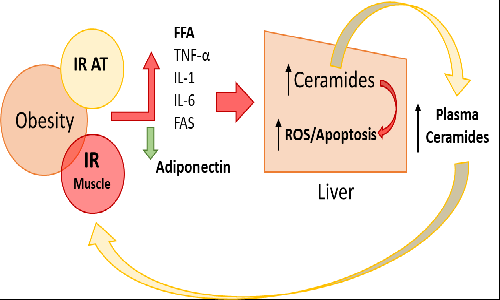
Jorge Maldonado-Hernández
IMSS, Mexico
Title: Plasmatic ceramides profile in adolescents and its association with hepatic steatosis independently of obesity
Biography
Biography: Jorge Maldonado-Hernández
Abstract
Objective: To assess the association between plasma ceramides and hepatic steatosis (HS) in adolescents, independently of obesity.
Material & Methods: Ninety-four adolescents from two previous studies conducted and published by our crew were included. Study subjects were stratified in three groups: normal weight (n=18), obesity (n=34) and obesity + HS (n=42). The presence of HS was defined when AST/ALT ratio was <1. Ceramides subspecies (C14:0, C16:0, C18:0, C24:0 and C24:1) were determined by LC/MS.
Results: All ceramides correlated inversely with the AST/ALT ratio and directly with ALT levels in plasma; the strongest correlation was observed among C14:0 ceramide (r=-0.54 and r=0.41, respectively; P<0.001). Furthermore, significant correlations were observed between cholesterol and all ceramides except for C24:1 ceramide. Fasting insulin and HOMAIR correlated directly with ceramides C14:0, C18:0 and C24:1. For assessing HS, a cut-off points of 10.3 nmol/L for C14:0 Ceramide reported a sensitivity of 92.7% and a specificity of 73.5% when normal weight and obesity groups (n=52) were compared against obesity + HS group (n=42). Positive and negative predictive values were 77.5% and 90.2%, respectively.
Conclusions: plasma ceramides are closely associated with hepatic steatosis in adolescents. C14:0 ceramide could be a novel biomarker of HS independently of obesity.

Figure 1. Obesity and insulin resistance increase the production of pro-inflammatory cytokines and free fatty acids delivery to the liver that promotes ceramides production. In the hepatocyte ceramides increase apoptosis through ROS mechanism. The increase of ceramides in the liver facilitate its release into the circulation, which in turn affects insulin sensitivity in muscle tissue. IR= insulin resistance, AT= adipose tissue, FFA= free fatty acids, ROS= reactive oxygen species.

